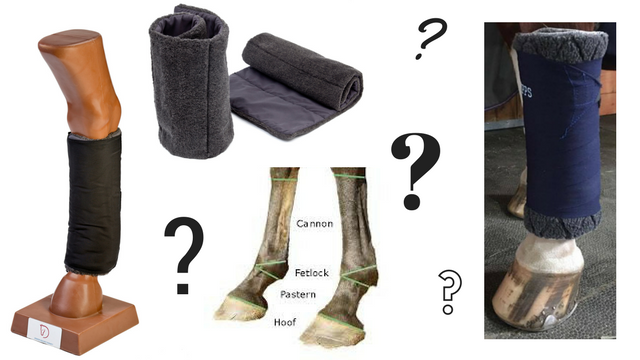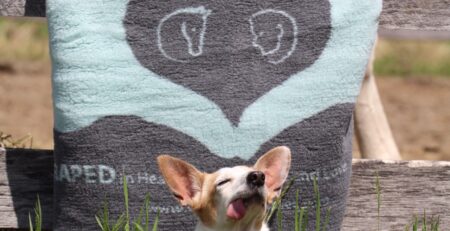How Products Are Made- Part I

Have you ever wondered how the Draper Therapies products that end up on your body and your horse are actually made? How does that process even start? Well I’m glad you asked, because I’m here to walk you through the steps of turning raw materials into the finished goods that are in your home or at your barn. Remember that as part of our Draper Dogma, we’re bringing high quality, US made and proven holistic products from our family to yours.
This first blog post will be an introduction of the general processes that occur from conception through delivery. The overall structure is as follows and though we’ll cover the basics here, be on the lookout for additional posts that will go into further detail.
How it’s Made at Draper Therapies:
- Ideas and Demand
- Research and Development
- Designing and Knitting the Fabric
- Sampling and Feedback
- Production
- Sale and Promotion
Ideas and Demand– It’s how the whole process is started and how products are ultimately conceptualized. Ideas come from experiences from traveling, going to shows, seeing new product showcases and ultimately being educated on all things relating to clothing for horses, dogs and humans. Ideas can also come from our esteemed Advisory Board who are currently using various products and wishing the special Celliant® properties could be added into what they’re using. Another basic rule is that if five customers ask for a product (demand), we investigate what the product could be for us and push it into research and development. Ultimately an idea is sparked in some way and we feel that we need to go forward with it.
 Research and Development– Draper Knitting has taught me that it is invaluable to provide the highest quality products that stand the test of time. Draper Knitting is Draper Therapies’ parent company for those of you who don’t know and are the ones responsible for creating most of the fabric that goes into our line. They’ve been around since 1856 and have had to change with the times to stay in business. They have learned what it takes to be ahead of the curve and continue to strive for that goal. They excel at research and development, and we like to think we do too because of them.
Research and Development– Draper Knitting has taught me that it is invaluable to provide the highest quality products that stand the test of time. Draper Knitting is Draper Therapies’ parent company for those of you who don’t know and are the ones responsible for creating most of the fabric that goes into our line. They’ve been around since 1856 and have had to change with the times to stay in business. They have learned what it takes to be ahead of the curve and continue to strive for that goal. They excel at research and development, and we like to think we do too because of them.
Once a product is conceptualized, we break it down to find what we want that product to achieve. We look at similar products in the marketplace and evaluate them, weighing out pros and cons. We read reviews, tons of reviews. We’ll purchase and study samples of similar products on the market. This can lead us to what is still lacking in an existing product and try to improve upon it going forward.
We then take our ideas to our designers which we have in house, or to those at Saratoga Horseworks who design and produce all of our dog and horse garments. Once the design is on paper, everyone has a chance to voice their opinions. We weigh the pros and cons, and we eliminate any negative feedback where possible. Then we move on to a final fabric design, or skip straight through to sampling if its fabric we’re already making.

Designing and Knitting the Fabric- If we are designing a new fabric, we work to create something that meets, if not exceeds our expectations of what we want to achieve in the base of a product. We then work with the designers at Draper Knitting and talk out the characteristics the fabric needs to have. It can be anything from a soft touch to durability to wickability and more. We work with different fibers and yarns to create those characteristics, keeping in mind that we always have to have 50% Celliant in the mix, and trying to source those materials as close to home as possible. Design and performance of the end product will also dictate a fabric formation. Draper Knitting has three vastly different formations to choose from: High Pile Sliver Knit, Conventional Circular Knit and Stitchbonded Non-Woven. The fabric is then knit and sent through a variety of finishing processes that can include shearing, tumbling, drying and/or coating. Any new sample created using Celliant is then sent off to Hologenix to be tested for efficacy, we want to be sure it provides all of benefits we’re promoting.

Sampling and Feedback- Once the fabrics are designed and produced, we send it off to the designers. If they’re in house we take our ideas to the floor, or we send it off to Saratoga Horseworks to create a sample based on all of our product ideas. It usually takes a few weeks to create patterns for, and rework the product, but eventually it evolves. We’ll usually create a dozen or so samples that get trialed by ourselves and sent out to our Advisory Board to get adequate feedback. Those samples are then used in a variety of scenarios and climates, and after a month or so of them being out in the field, we compile as much feedback is possible. If all of it is positive, we move forward. If we have any negative feedback or criticism, we reevaluate all aspects of the product based on those problem areas. If the problems are major, the samples can be completely revoked and we evaluate whether or not to start over or dismiss the project. Any minor problems get tweaked before production.

Production- Our new fabric is put into full production and then shipped with the winning design to be cut and sewn. All the parts and pieces come together as a new product in a very efficient and timely manner. After packaging, we have a new item on our shelves! We also send out our sample designs to be photographed so that we can take preorders and be set to launch as soon as stock arrives.
Sale and Promotion- Every product is different in the ways in which we promote them- many are anticipated even before they arrive, but essentially it’s all about getting the word out there. We use our social media, blog and newsletter to announce the latest happenings. We also may send out a press release to the media to alert as many people as we can on. Talking to folks at shows also is one of my favorite methods. Ultimately it’s making sure as many people as possible are aware and excited about the launch and sale of our newest addition to Draper Therapies.



Leave a Reply